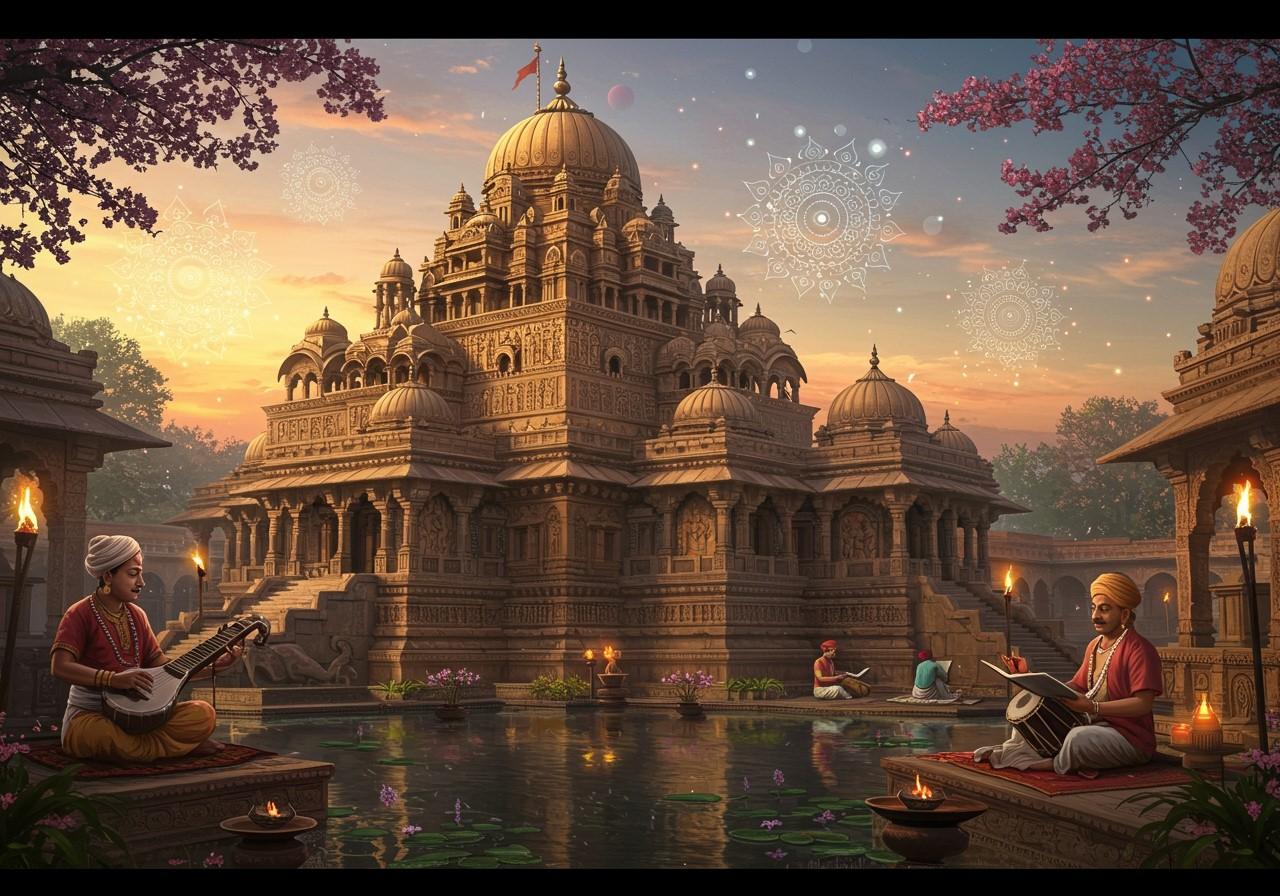
The Vardhana Dynasty, also known as the Pushyabhuti Dynasty, held sway over northern India during the 6th and 7th centuries CE. Reaching its zenith under Harsha Vardhana (reign: c. 606-647 CE), the dynasty’s influence extended across a vast swathe of northern and northwestern India. Their reign is pivotal in understanding India’s transition from ancient to medieval times, marked by significant contributions to art, architecture, religion, and even the institutionalization of the Kumbh Mela.
Art and Architecture of the Vardhana Era
The Vardhana era witnessed a flourishing of art and architecture. A unique blend of indigenous styles and influences from neighboring regions resulted in a rich cultural tapestry. Sculpture, particularly intricate carvings depicting deities and scenes of daily life, reached new heights. Terracotta gained popularity as a medium for expressive figures, while the artistic traditions of the preceding Gupta period continued to exert their influence.
Harsha Vardhana’s patronage spurred architectural innovation, evident in temple construction and urban planning. The ruins of Harsh Ka Tila in Thanesar stand as a testament to this era’s architectural prowess. Royal patronage also extended to artists and builders, fostering an environment where art and architecture thrived. Murals and frescoes, adorning monasteries and religious sites, further enriched the cultural landscape.
Architectural Marvels of the Vardhana Dynasty
The Vardhana Dynasty is renowned for its grand temples and monasteries. These structures, built using stone and brick, showcase innovative layouts, intricate designs, and elaborate ornamentation. Religious architecture focused on Buddhist stupas and Hindu temples, demonstrating the dynasty’s embrace of diverse faiths. Urban planning in cities like Kanauj and Thanesar incorporated sophisticated water management systems, including stepwells and tanks.
The Vardhana architectural style exerted a lasting influence on later Indian architecture, notably seen in Rajput and Mughal structures. The surviving sites from this period hold immense historical significance, offering valuable insights into the dynasty’s architectural achievements. For more information on ancient Indian architecture, consider exploring the Badami Cave Temples and the Sas-Bahu Temples.
Religious Harmony under the Vardhanas
The Vardhana Dynasty presided over a period of religious diversity and tolerance. Harsha Vardhana, a notable patron of Buddhism, supported monasteries and scholars. Hinduism also flourished, with temples dedicated to Shiva and Vishnu. Furthermore, Jainism received royal respect, with its teachings integrated into the broader societal fabric.
This era is marked by religious syncretism and harmony. Monasteries and temples were well-organized and efficiently administered. Religious festivals and rituals played a vital role in the cultural life of the people. Accounts from figures like the Chinese traveler Xuanzang provide invaluable documentation of the religious practices of the time. Learn more about temple rituals and traditions at the Bhoganandishwara Temple.
A Lasting Legacy
The cultural contributions of the Vardhana Dynasty resonated through later periods of Indian history. Their artistic styles evolved and continued to inspire, while their architectural innovations influenced subsequent dynasties. The institutionalization of the Kumbh Mela as a structured religious and cultural event fostered spiritual, economic, and cultural exchanges that continue to this day.
Harsha Vardhana’s legacy is evident in the enduring cultural practices and architectural styles that continue to shape modern Indian aesthetics. The religious integration and tolerance fostered during his reign set a precedent for harmony that has profoundly influenced India’s cultural narrative. Explore the legacy of the Chandela Dynasty architecture to see how later dynasties built upon these foundations.
Experience the Vardhana Heritage with Poojn.in
Connect with the rich heritage of the Vardhana Dynasty through authentic puja items available at Poojn.in. Enhance your spiritual practice with items like the Panch Ratna (five precious stones) set, symbolic of prosperity and divine blessings, reminiscent of the architectural elements found in ancient Vardhana temples.
Poojn.in offers a wide selection of products, including:
- Holy Idols: Crafted in traditional styles to honor deities.
- Ritual Utensils: Enhance your temple-style worship at home.
- Sacred Jewelry: Adorn yourself with spiritually significant pieces.
- Complete Puja Kits: Conveniently includes all essential items.
- Authentic Pooja Samagri: High-quality worship materials for your rituals.
Recreate traditional Vardhana-style worship at home with:
- Temple Decoration Items: Create a sacred atmosphere.
- Clay Items for Rituals: Authentic materials for traditional practices.
- Traditional Puja Thalis: Essential for offerings and ceremonies.
- Specialized Dashakarma Items: For specific rituals and ceremonies.
Shop Now at Poojn.in and explore our complete collection. We offer convenient online ordering and delivery across India. Our Radha Krishna idols and Lakshmi Ganesh idols are perfect for creating a sacred space in your home, inspired by the reverence of the Vardhana era.
Prices may vary. Please check the website for current rates.
Conclusion
The Vardhana Dynasty’s contributions to Indian art, architecture, and religion are undeniable. Their intricate sculptures, magnificent temples, and inclusive religious practices continue to inspire and influence modern Indian aesthetics. Harsha Vardhana’s reign stands as a testament to religious tolerance and cultural integration. Explore historical sites like Thanesar to experience the rich legacy of this era.


